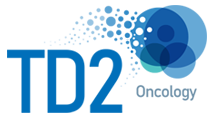Therapeutic resistance remains one of the most significant barriers to durable responses in oncology. Whether primary or acquired, resistance mechanisms undermine efficacy, complicate trial outcomes, and often emerge too late in the clinical process to be effectively addressed. The ability to interrogate these mechanisms in preclinical models is critical not only for lead candidate optimization, but also for informing biomarker development, rational combination strategies, and long-term therapeutic planning.
The Preclinical Imperative: Modeling Resistance Before the Clinic
Understanding how tumor cells evade treatment requires systems that can replicate the complexity and adaptability of cancer biology. Preclinical resistance modeling enables the interrogation of drug-target interactions, feedback loops, compensatory signaling, and tumor evolution under therapeutic pressure. These insights support key inflection points in development, including:
- Selection and de-risking of clinical candidates
- Identification of predictive and pharmacodynamic biomarkers
- Validation of synergistic combinations or sequential treatment strategies
- Refinement of target patient populations
Without early characterization of resistance liabilities, developers risk entering the clinic with incomplete mechanistic understanding and limited ability to pivot around clinical hurdles.
Experimental Approaches to Resistance Mechanism
A range of preclinical platforms are employed to model and dissect resistance mechanisms. These include:
1. Chronic Drug Pressure and In Vitro Adaptation
Continuous or stepwise exposure of tumor cell lines to therapeutic agents can drive the emergence of resistant subclones. These adapted populations are then profiled for genomic, transcriptomic, or proteomic alterations. Studies frequently reveal upregulation of bypass pathways, efflux pumps, or adaptive transcriptional programs.
2. In Vivo Relapse and Progression Models
Orthotopic or subcutaneous tumor-bearing models are treated until regression and subsequently monitored for recurrence. Harvested tumors are analyzed to detect treatment-induced shifts in signaling, clonal selection, immune landscape alterations, or microenvironmental contributions to resistance.
3. Serial Transplantation of Resistant PDX Models
Patient-derived xenograft models offer a high-fidelity platform to study resistance in a heterogeneous, clinically relevant context. Serial passaging of relapsed tumors allows for tracking of resistance evolution, maintenance, and potential reversibility across generations.
4. Functional Genomic Screens
CRISPR-Cas9 and RNA interference platforms are leveraged to perform loss- or gain-of-function screens, identifying genes that mediate drug tolerance or resistance. Hits from these screens often guide target prioritization, combination partner selection, or synthetic lethality-based strategies.
5. Multi-Omic Integration
Combining transcriptomics, proteomics, phospho-signaling analyses, and single-cell approaches provides a systems-level view of resistance emergence. Integrated data sets can reveal compensatory signaling networks, EMT transitions, metabolic rewiring, and immune escape phenotypes.
Clinical Translation and Strategic Value
Preclinical resistance data serves as a foundational resource for translational strategy. Insights derived from these studies are often used to:
- Justify mechanism-based combinations entering early clinical trials
- Identify resistance biomarkers for inclusion in CDx development
- Anticipate mechanisms of progression for post-approval lifecycle planning
- Improve regulatory positioning through mechanistic clarity
Importantly, modeling resistance is not solely about de-risking failure. It enables a forward-thinking approach to drug development where adaptive response is part of the planning, not an afterthought.
Conclusion
Resistance is not a question of if, but when. The ability to model, understand, and preempt resistance in the preclinical phase is essential for oncology drug developers aiming to deliver meaningful, lasting therapies. These studies provide mechanistic clarity, guide rational development decisions, and ultimately contribute to more resilient clinical programs.
To explore how resistance modeling can be integrated into your development pipeline, contact TD2 Oncology today.



